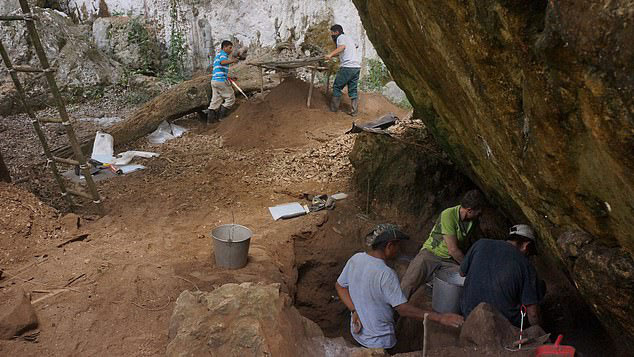'Unparalleled treasure' from 44 mysterious remains in a stone pit
The most special burial site ever, with 44 sets of remains dating back 1,000-9,600 years is actually a gold mine with archaeologists.
In a mountainous region famous for Maya relics in Belize, a Central American country, scientists have found something even more ancient and valuable. A "world of the dead" could pave the way for a series of studies of ancient history in this land.
It was a stone pit full of remains . But the strangest thing is that 44 of the remains buried here are not of the same age but have stretched over 1,000-9,600 years ago. This led the team to describe the tomb site as an "incomparable treasure": the examination of these 44 people will create a full picture of life, food, agriculture, epidemics, customs . that people in this region went through, each stage throughout 9,000 years of history.

The remains were buried deep in natural stone tunnels that were further intervened by humans to form tombs - (photo provided by the research team).
According to the University of Exeter's research team, the remains are incredibly well preserved, probably thanks to the enclosed space of the natural stone pit. They have both adult men and women and children, as a surprisingly perfect model of a primitive community.
They began to exploit this archaeological "treasure" with diet studies and discovered the earliest time that corn - the common food crop in today's life, began to be sown by humans. Planted and used: 4,700 years ago . At that time, corn accounted for one-third of the diet, but increased to 70% in just 700 years, a testament to mature farming.

Excavation and research remains are ongoing. (Photo provided by the research team).
This food crop is also known as the backbone of pre-Maya agriculture, with clear evidence from 2,000 years ago.
Meanwhile, the oldest remains still live mainly with herbs and berries.
The original findings were published in Science Advances. The excavation and research of the remains is still ongoing, promising many interesting revelations about a mysterious historical period of the ethnic group most likely involved in the construction of the legendary Maya empire.
- Mysterious remains of 140 warriors lie between the 'treasure' 3,200 years
- Search for the most mysterious treasures of all time
- The mystery of the thousand-year-old stone jars contains remains of dead people in Laos
- Egypt opened the lid of ancient stone coffin 2,000 years
- Three treasure chests and human remains in the wreck in England
- The solution to the mystery of the strange
- Dozens of remains in stone casket 1,600 years in Wales
- Afghanistan's blue stone treasure is devastated
- 10 biggest treasures of all time
- Detecting mysterious stone statues in China
- Horror secrets were discovered in 2013
- Mysterious 2,500 years in Laos jars
 Discovered an ancient centipede fossil 99 million years old
Discovered an ancient centipede fossil 99 million years old Discovered bat-like dinosaurs in China
Discovered bat-like dinosaurs in China Discovered a 200-year-old bronze cannon of the coast
Discovered a 200-year-old bronze cannon of the coast Discover 305 million-year-old spider fossils
Discover 305 million-year-old spider fossils